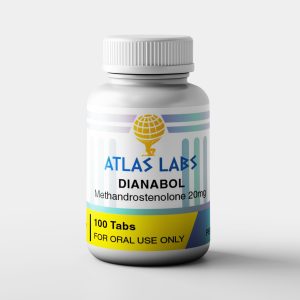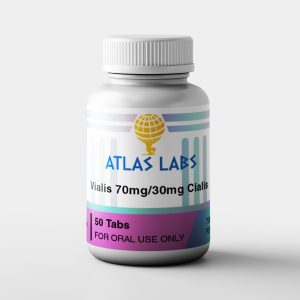The sculpted, larger-than-life physiques seen on professional bodybuilders are often admired, but not always natural. While dedicated training and diet play a crucial role, those extreme muscle gains typically go beyond what the human body can naturally achieve. That’s where performance-enhancing drugs (PEDs), especially anabolic-androgenic steroids (AAS), come into the picture.
Understanding the Role of Steroids in Bodybuilding
Anabolic steroids, often nicknamed “roids” or “juice”, are synthetic substances used to boost muscle mass, strength, and recovery time. While steroids can fast-track gains, they also disrupt the body’s natural hormone balance. This imbalance doesn’t simply vanish after the last injection or pill, which is why Post Cycle Therapy (PCT) becomes essential.
What Is Post Cycle Therapy (PCT)?
Post Cycle Therapy is a medically guided process designed to help your body recover its natural hormone production after steroid use. When steroids are introduced into the body, natural testosterone production slows down or stops entirely. PCT helps restore balance, jump-start testosterone production, and minimize side effects from steroid withdrawal.
Athletes typically use steroids in cycles—periods of use followed by periods of rest—to manage side effects. Even so, once a steroid cycle ends, the body doesn’t immediately rebound. PCT bridges that gap.
Why You Need PCT: Hormonal Recovery & Side Effect Management
Stopping steroid use without post-cycle support can lead to a range of unpleasant and potentially harmful side effects. Testosterone levels may take months to rebound, and during that time, users often experience:
- Low libido
- Erectile dysfunction
- Anxiety and depression
- Sleep disturbances
- Acne
- Headaches
- Nausea
- Appetite loss
Without a proper PCT regimen, not only are your gains at risk, but your long-term hormonal health could be compromised.
Common PCT Medications: SERMs and More
Two of the most commonly used medications during PCT are Clomid and Nolvadex, both classified as Selective Estrogen Receptor Modulators (SERMs). These drugs help to reduce oestrogen buildup while encouraging natural testosterone production.
- Clomid (Clomiphene): Stimulates the release of luteinising hormone (LH) and follicle-stimulating hormone (FSH), key to testosterone production and fertility.
- Nolvadex (Tamoxifen): Blocks estrogen receptors and reduces the risk of estrogen-related side effects like gynecomastia and cardiovascular issues.
These should only be taken under medical supervision, ideally alongside blood work, to determine hormone levels and adjust dosages accordingly. Self-medicating is risky and can lead to hormonal chaos if mishandled.
Other Supplements During PCT
PCT isn’t just about managing estrogen. Supplements such as acetyl-l-carnitine and phosphatidylserine can help reduce cortisol levels and prevent catabolism, the breakdown of muscle tissue. However, like all supplements, these should be cleared by a healthcare provider as they may interact with your body’s fragile hormonal state during recovery.
How and When to Start PCT
The timing of your post cycle therapy (PCT) depends largely on the type of performance-enhancing drug (PED) you’ve used. For SARMs and prohormones, PCT should begin immediately after the final dose. In contrast, if you’ve used injectable steroids, particularly those with a slow-release formulation, it is generally recommended to wait approximately one week or more before starting PCT to allow the synthetic hormones to clear from your system. Most PCT protocols last between four to six weeks; however, the duration can vary depending on factors such as the specific compounds used, the dosage, and the overall length of your cycle.
Should You Keep Training During PCT?
Absolutely, but with a few caveats to keep in mind. Your body is in a sensitive state during PCT, so your training intensity should be reduced. Focus on compound lifts and moderate volume to maintain muscle mass without overloading your system. Avoid pushing for PRs or drastically increasing weights.
Cardio, mobility work, and general aerobic activity can support your physical and mental well-being, but overtraining is counterproductive. Think maintenance, not progress. Give your body the space it needs to heal.
Rest, Sleep, and Nutrition: Foundations of PCT Recovery
Sleep is non-negotiable during PCT. Hormones fluctuate heavily during this period, and getting 7–9 hours of restful sleep supports mood, recovery, and hormone regulation.
Trouble sleeping? Try:
- Keeping a consistent sleep schedule
- Reducing screen time before bed
- Avoiding caffeine and alcohol in the evening
- Creating a cool, dark, quiet sleep environment
On the nutrition front, focus on whole, nutrient-dense foods, hydration, and avoiding any supplements or herbs that could interfere with hormone balance unless cleared by your doctor.
Is PCT Always Necessary?
If you’ve used anabolic steroids, then yes—PCT is a critical step in preserving your health. Some men may bounce back slowly without it, but this often comes with uncomfortable symptoms and potential long-term consequences. Even if you’re using “milder” substances like SARMs or prohormones, hormone suppression still occurs.
FAQs About Post Cycle Therapy
When should I start PCT?
Start PCT right after your last dose of SARMs or prohormones. For injectable steroids, wait a week or more, depending on the drug’s half-life. You need to wait until the synthetic testosterone clears your system before initiating PCT.
How long does PCT last?
Most PCT protocols last 4 to 6 weeks, but your doctor may extend the duration based on your individual cycle, hormone levels, and symptoms.
Final Thoughts
Post cycle therapy is a critical way to bring your body back into balance, reduce estrogen dominance, and support natural testosterone production. With the right medical guidance, lifestyle choices, and mindset, you can preserve your gains and protect your health for the long term.
The information provided in this article is intended for educational and research purposes only. It does not constitute medical advice or a recommendation to use any substances discussed. Always consult with a licensed medical professional before beginning any supplement, peptide, or anabolic steroid protocol.
If you’re interested in exploring high-quality research compounds, you can browse our shop here.

